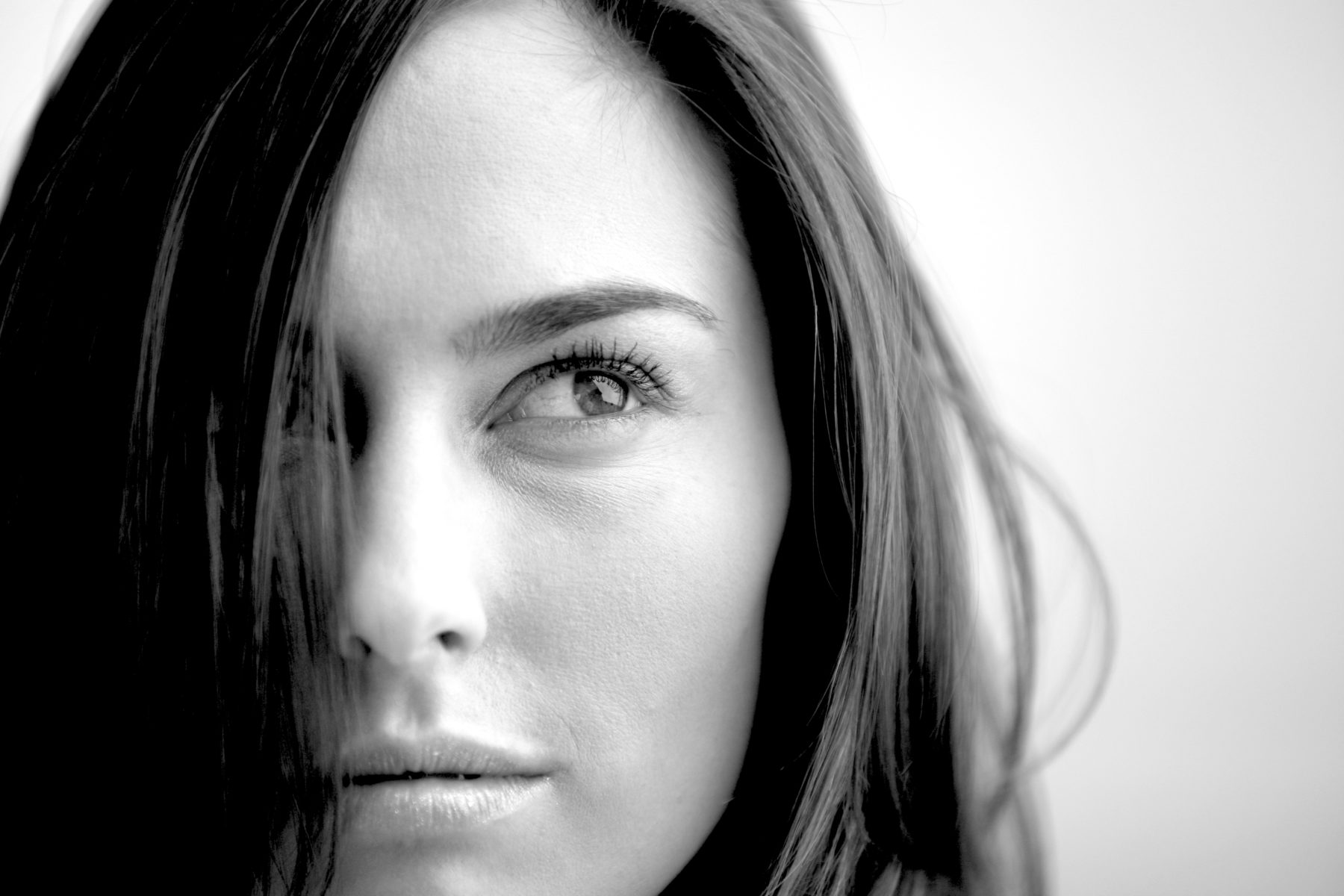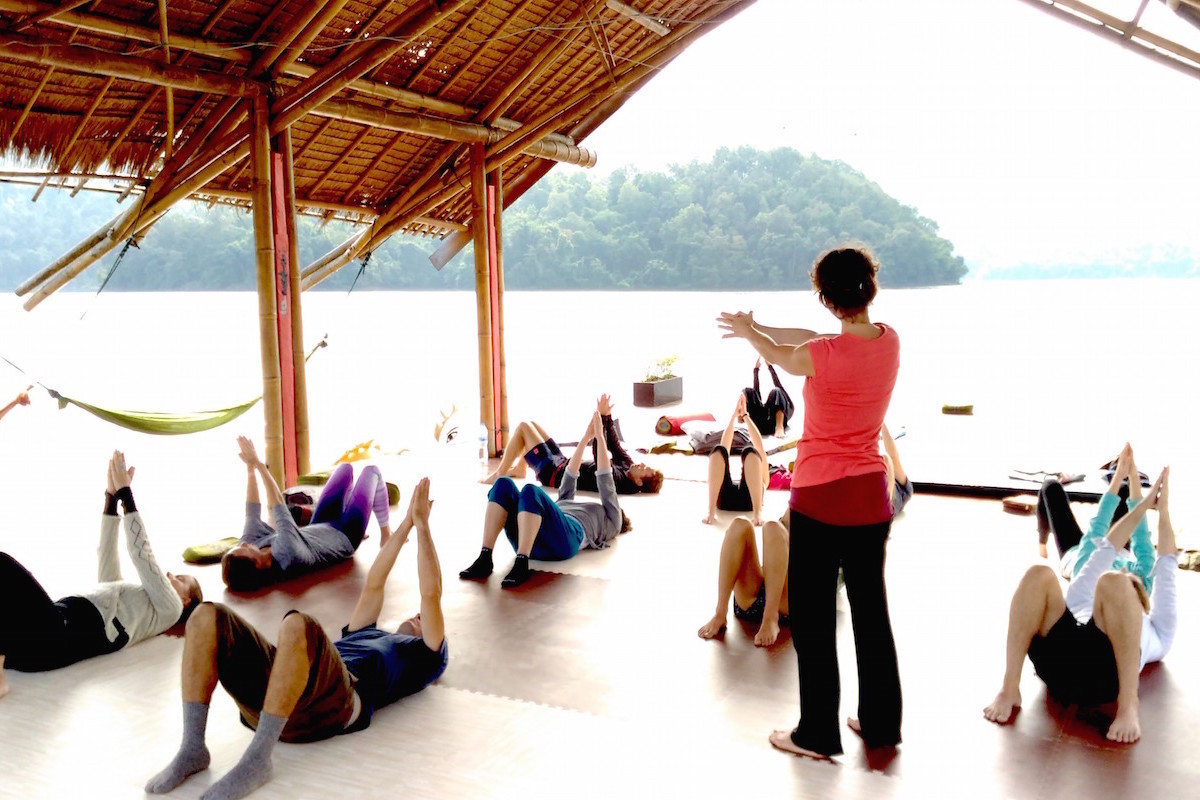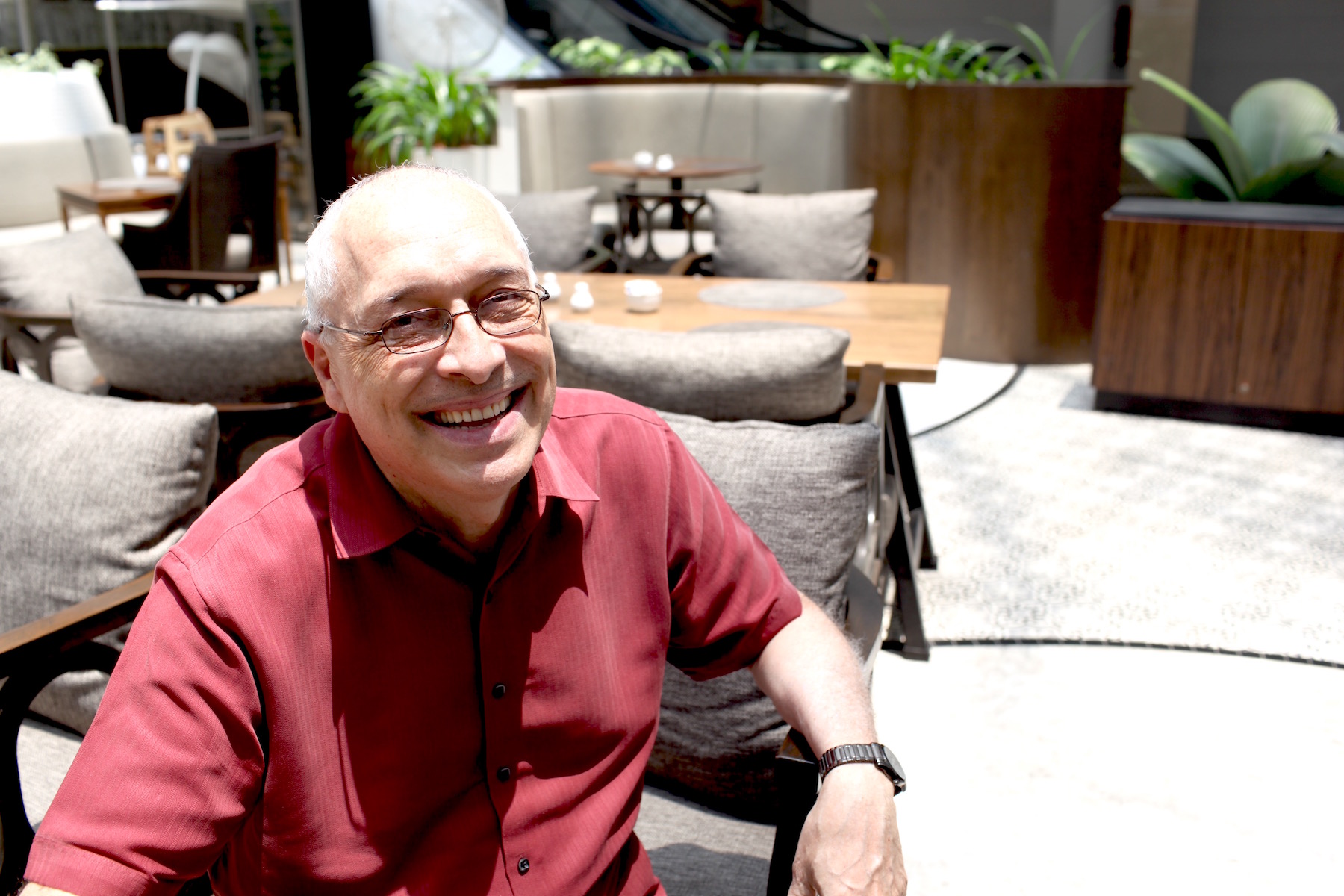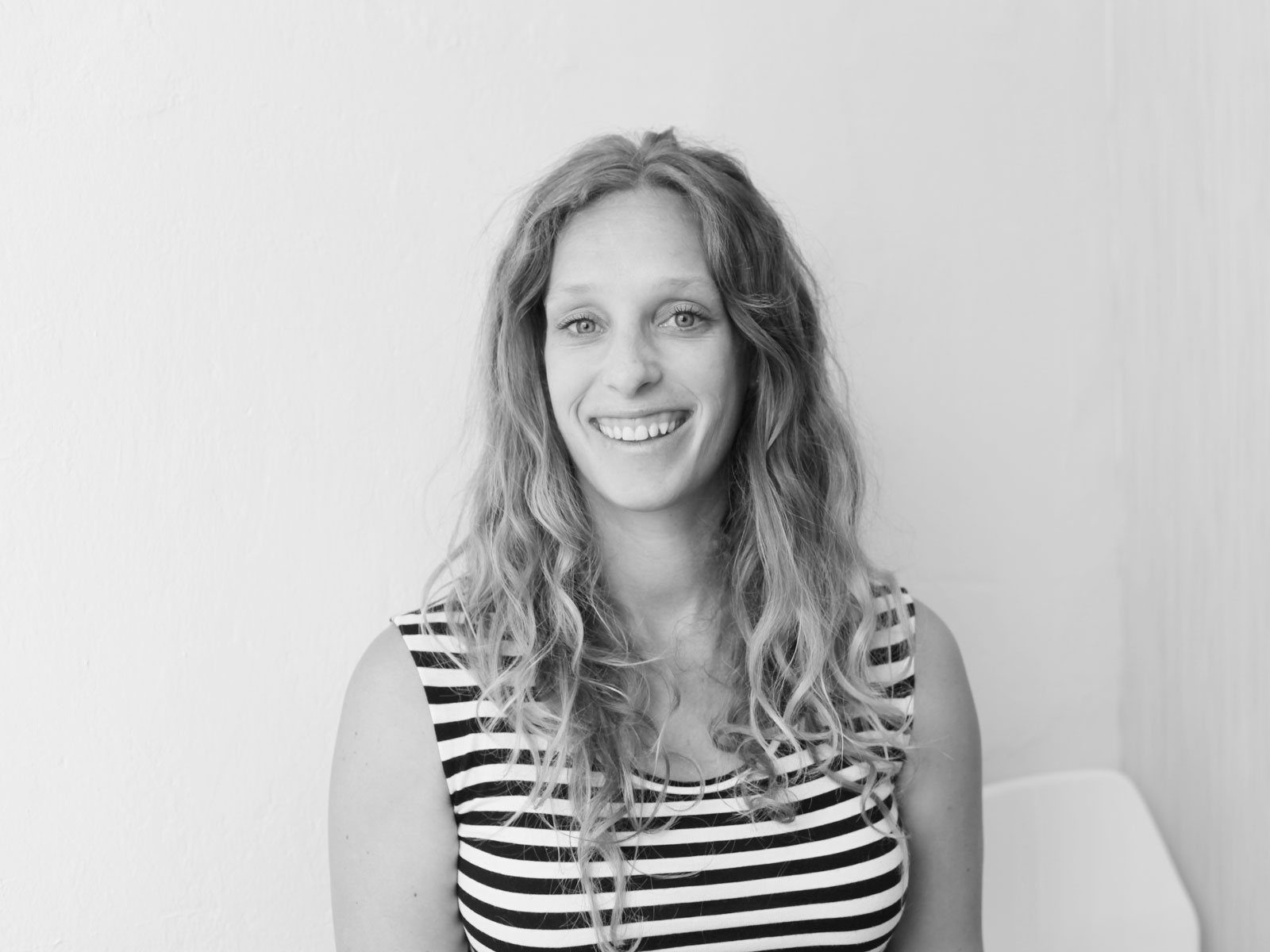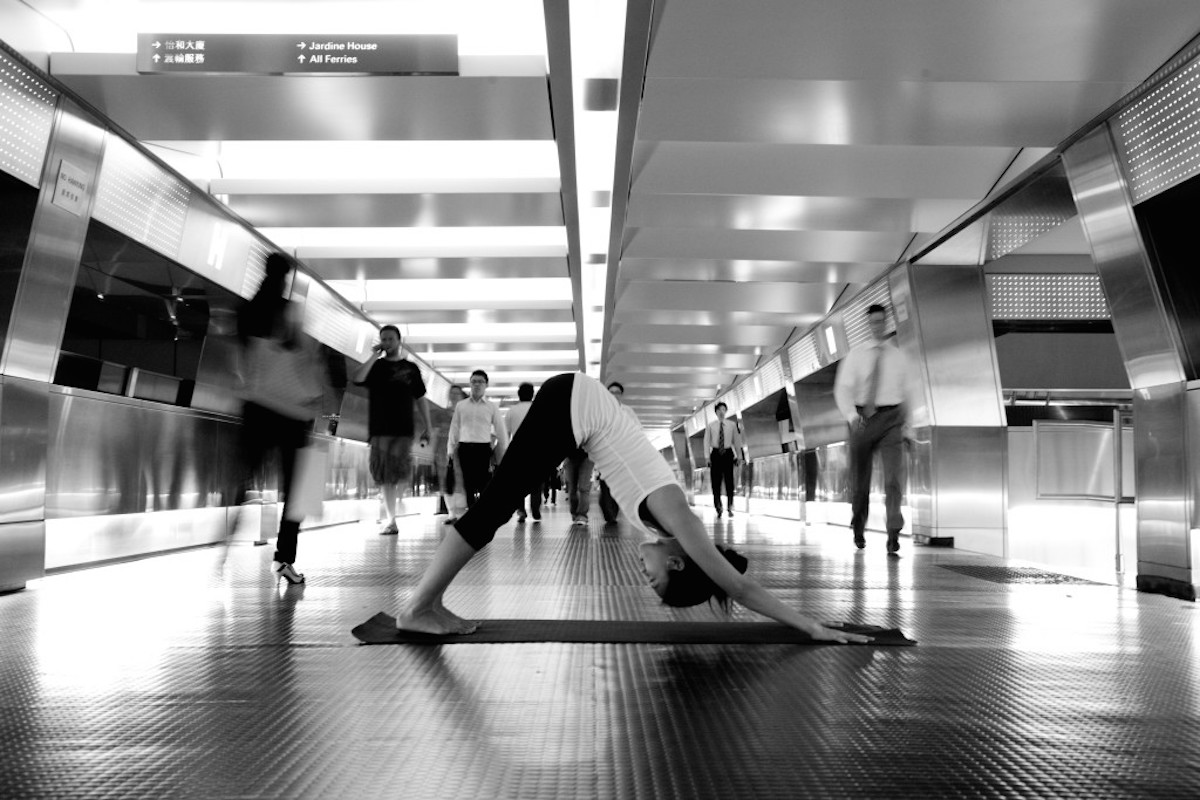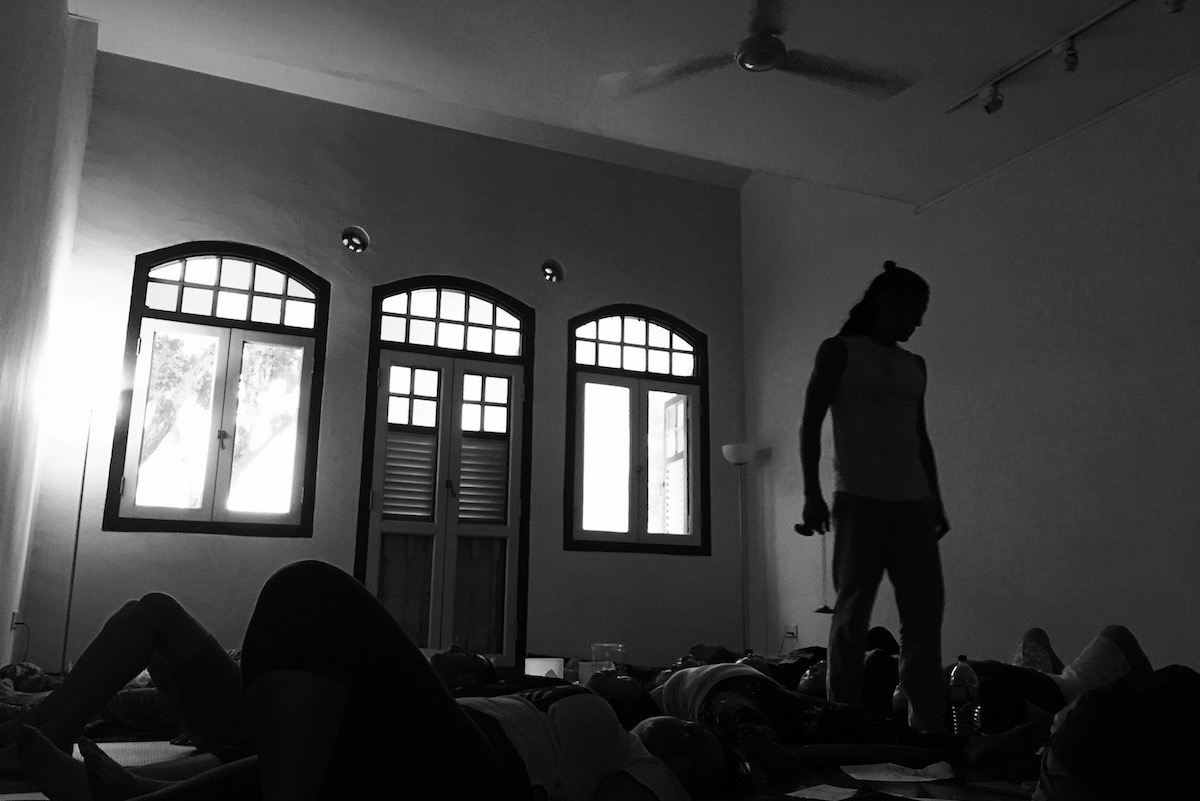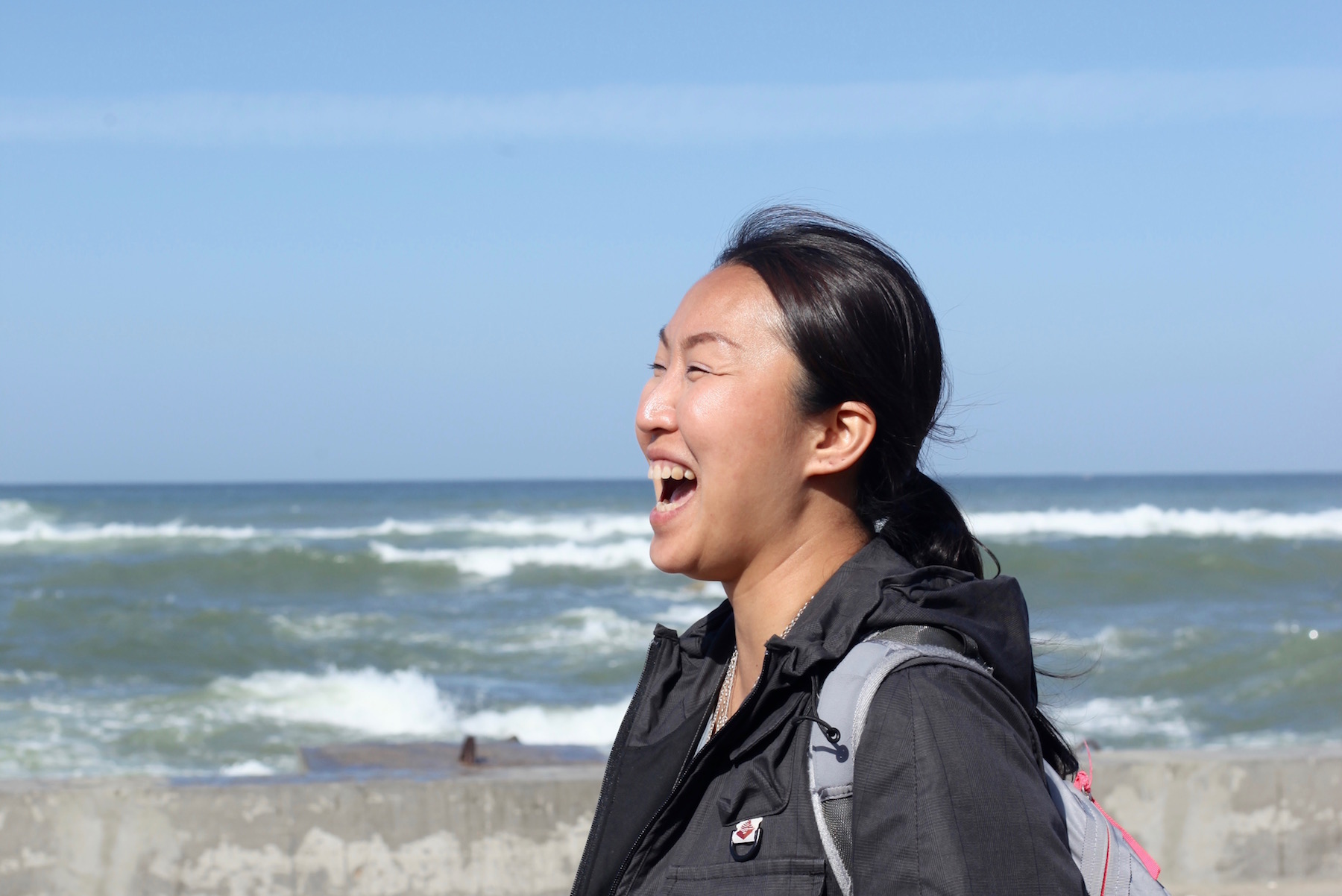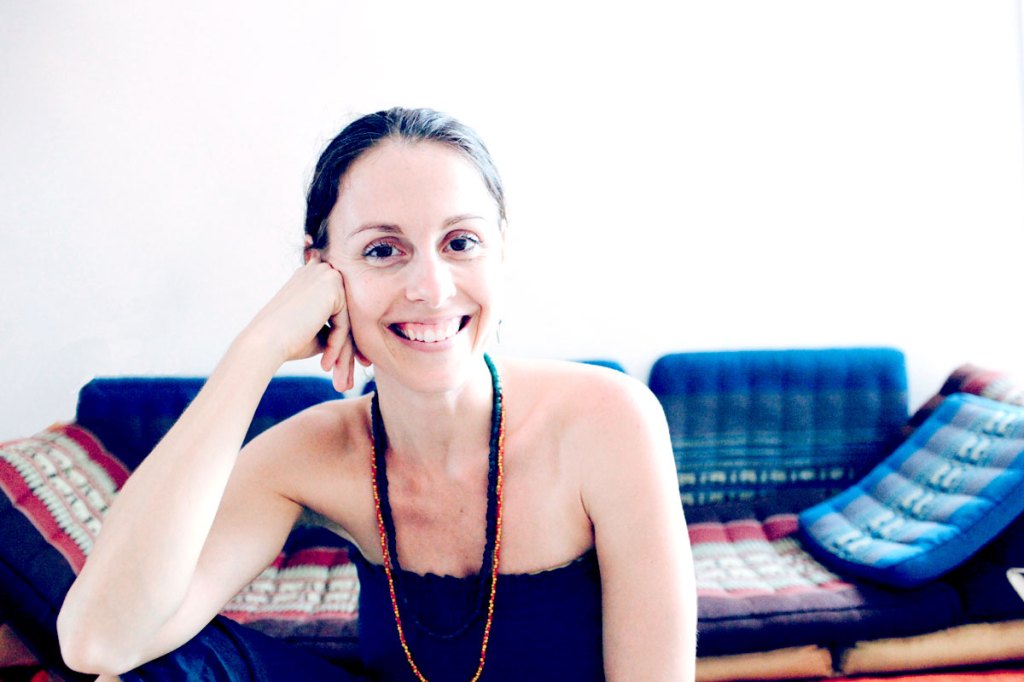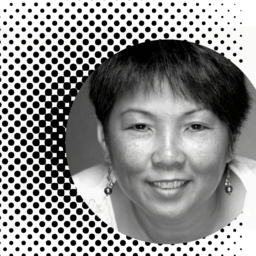Nicole is a Grinberg Method practitioner. This is a modality that was completely new to me, and to Singapore. I was immediately intrigued by it. This somatic bodywork approach works deeply for people and addresses a common issue in today’s society – not being in our body.
The Grinberg Method is about awareness, and about being in the body. To understand how it works, I had to experience it. My session began with a foot analysis. As I sat comfortably on the massage table, in a bob seat, Nicole held my feet. For quite a while. She looked at them closely. She stretched them. She touched them with varying pressure and she asked a multitude of questions. As I was keen to understand, she referred to the elements and organs and questions and answers flowed both ways. What she did with my feet was not a massage but at times, it did feel like it as she kneaded certain parts to see what the texture, colour, humidity, and other qualities were.
The next part is the bodywork. When I say bodywork, it was not just Nicole doing physical work on the body. I was required to pay very close attention, and not doze off. This is the learning process whereby I re-learn how different parts of my body actually feel. The relaxation part of the session i.e. dozing off comes at the end.
In this first session, it was unsurprisingly my shoulder that was the focus. I was holding a pattern there, as do so many people, and with Nicole’s guidance, I realized what it felt like when I released the tension there. It was a relaxation different from what comes from a massage. I felt the area opening up, and the tremendous space that was there. In the weeks following and after a few more sessions, I would find an increase in my energy level, more ease, and an increased awareness of how I was in my body.
?
You start your sessions with a foot analysis. How is it different from reflexology?
?
The whole body is reflected in the feet. The areas are the same. The founder Avi Grinberg studied reflexology. I would say we are not going into as much detail as in reflexology. I would rarely look at a specific organ but more at the bigger area. If I know a client has a low belly pain I can look at the feet in order to see how the whole area is affected. It is one tool of many tools, which include working on the body and breathing. Ultimately I want to teach the client to reach their aim.
?
What kinds of things can you tell from the feet?
?
The foot analysis is more for me to have the knowledge to ask questions. For example if I see effort in the area for the lower back, I will ask about what is involved in this area. The organs. Symptoms. Pains. What I see triggers my interest to find out what the person already experiences in that area. Is there anything that shows me an imbalance?
I also look at the whole body. From the moment the client comes in, I have an impression. I have a sense of what is there. I can be wrong. When a client says something, I have to decide if that makes sense. Do I look for something else or is something telling me that I have to stay with it? I find these answers in the feet.
The Grinberg Method uses touch, breath, movement, physical exercises, description tools and techniques to increase the ability to pay attention. It is a structured teaching-learning interaction between practitioner and client, with the body being the focus.
Nicole Gilg-Geymayer
?
Do you talk about the past, the “cause”, with the client?
?
I would say talking about emotional things from the past is not such an important thing for the Grinberg Method. Everything that falls under personal history is helpful mainly for the client to understand where they started to build a pattern, where the pattern comes from, and in a way build up enough energy and motivation to work on it.
For example, a client is stubborn and closed. In that moment the client does not associate that with anything in her past because it is how she feels now. And then through talking with the client, you remind her that the way she is now, the way she holds the diaphragm, the way she holds his body, is exactly how she was when she was a girl and didn’t want to do things her mother told her.
People recognize it and in a way they also see how ridiculous and useless it is to still be that 11 year old girl. It’s actually not what they want now. You get them to feel it and then also to let go of it. They experience the freedom that comes from letting it go. It helps with understanding and giving motivation. But the whole connection with the past is not indispensable.
?
How do you proceed if a client is not so aware of how they are feeling?
?
It actually happens quite a lot. Often I see really clear signs but the client feels nothing. When I was still very inexperienced, I was very insecure about that and I would look for something else. Now I know I can really trust the body and the signs really mean something.
I then try to come from a different direction with my questions. If I had been asking about physical symptoms, I could then ask, if we are looking at the chest area, if the client is able to breathe fully. I would try to touch the area during the session and see what is there. Often with people who are not so attuned to their bodies, they had stopped paying attention a long time ago. That means, for them, the state of not feeling and not breathing is very normal.
Sometimes when a client starts to pay attention, they start to have pain. All of a sudden they feel that part of their body. All of a sudden they notice how tense they are.
For some people that’s a good thing because they realize there is a block. For some people it can be too much. But I would say it is a good thing for everyone.
Sessions are not always comfortable. Also the outcome of the sessions is not always comfortable. In the long run, it is always learning. Always a step forward.
?
What do you say to clients who are really not comfortable?
?
When I have a client who does not have a lot of sensations in the body, I work with them in a very sensible way and not overchallenge them. I don’t immediately go deep but work slowly. For example, we can start with their feet and approach the areas through the feet first. The feet are not only for analysis but also for working.

The aim of the Grinberg Method is teaching people to recognize and release patterns that direct them to respond on autopilot rather than from freedom. When these limiting ways of being are stopped, there is tremendous energy for people to move towards greater health and more personal possibilities.
The Grinberg Method is for people wishing to end their suffering from physical pain as well as anyone ready to live their lives more fully.
Nicole Gilg-Geymayer
?
How does what you discover with them in a session translate into a change in their lives?
?
It doesn’t always happen in the first few sessions but it does happen in the beginning of the process. We look at situations a client wants to change and it is a situation that happens often. It is usually a pattern that annoys the client. You can say this is the client’s practice field outside of the sessions.
During the sessions a client learns what happens in the body and what it is that they do. Most of all the client learns to gain control and learns how to stop the pattern. Then they have that awareness in the situations they want to change.
For example, being tense in the tummy can cut away sensations in the legs. You may lose contact with them. In real life, in those situations, you learn to recognize when you are holding in your belly. You check for the legs. How is the contact with my legs? How does it feel standing at the moment? You remember when you let go, you gain something. You remember this is something you want – this experience of being strong, feeling confident, and standing strong on my two feet.
It is not so difficult to do it. You do need to remember and to want it.
?
Do you find that people usually have a specific reaction to a stressful situation or an emotional event?
?
There is no universal stress pattern but many people hold their tense shoulders in a certain way because it helps them feel less vulnerable and more protected. Then they breathe in a way that supports holding the shoulders in that way. They are likely to stop breathing fully.
So when I work with people, I teach them about breathing. These days many people learn very fixed ways about how breathing is supposed to happen and they think they don’t breathe right. They think that there is a right way – one way – to breathe. I would say that people have to find the way that is right for them in the situation they are in. Generally, for most people, that is breathing more. Breathing deeper. Breathing into different areas.
?
The breath is important in many modalities. What is the importance in the Grinberg Method?
?
Breathing is for people to have more energy and attention. Breathing in a certain way can support a certain pattern. If you have more options, you can breathe in many different ways and change the pattern.
?
Why do most of us do not breathe “properly”?
?
I think it’s because we realize that if we breathe less, we feel less. Not breathing keeps things stagnant, not changing.
?
Because change can be difficult and scary.
?
Yes. Not breathing keeps things feeling more secure, more like we already know it.
?
How long does it take for something to become a pattern?
?
I don’t know for sure. You have to either do something often and repeat it frequently, or it is very strong and goes deep, like a trauma.
?
Does stopping the pattern happen consciously?
?
It has to happen again and again and again because a pattern is a stubborn old fart. It will try to stay with you. Of course not all patterns. There are different “categories”. A pattern you’ve had for a long time will likely try to stick with you a long time. With Grinberg Method you learn to gain control over the area and to feel the difference. Feel how it is when you hold the pattern, feel how it is when you stop it. Once you know how to stop it, the pattern becomes less and less powerful.
?
How does your yoga teacher training come into your practice and study of the Grinberg Method?
?
It set a good foundation for mind-body concepts and for breathing but it was also challenging to completely let go of what I had learned and to learn anew.
The main challenge of being a Grinberg Method practitioner is, on the one hand, be knowledgeable and skilled and on the other hand, with every session, drop everything and not know it.
I have to be really open to follow the body of that client, in that session. All the concepts in my head, everything I think I have accomplished, I have to let go. Trust not knowing. Trust that I will be able to pick it up. That’s a challenge. Also not to rush things or wanting to have that “wow” because sometimes it takes time. Really be naked, in a way.

?
How fast does the body change?
?
Sometimes very fast. When something changes to the positive, you don’t always see it. We very quickly adjust to the higher level of energy, or better breathing or less stress or better relationships. You just think it’s normal. If you really look, you can see that it has actually been two, three weeks and that there is actually change happening. Many of us are not very good at acknowledging change to the positive. A change to the negative – we are usually very good at seeing it immediately.
So one of the things I do, when I am looking at the feet, I ask the clients how the things we were working on have changed. I want to point out to them that there has been a change. It’s like when I look at my life now and when I began the Grinberg Method it is quite a big change.
?
What is the biggest change?
?
I had a pattern of not knowing what I want. I was always looking at what other people wanted and I was trying to please them. It was very strong in me. This emptiness I was feeling – it was coming from that. I was not driven by my own wishes. Without noticing it, I was following expectations.
I had these patterns of thinking, where I would always be dissatisfied with what is because I would think something better was still out there. I always thought another job could be better or another house could be better. It’s completely gone. Now I feel I am living exactly what I want. And if I don’t know it immediately, I have a way of figuring it out. With this, my relationships have changed.
It’s quite a change.
?
What is the Grinberg Method to you?
?
It is learning, not treating. You are taking away something from the sessions that you can keep for the rest of your life. It is empowering. To work with personal history, body-mind, the breath, etc there are not that many methods that work with the whole thing. In the end, you can’t really separate the body and mind and I like this somatic approach a lot.
More about Nicole here
Nicole is now based in Munich Germany where she continues to offer Grinberg Method and somatic coaching.



